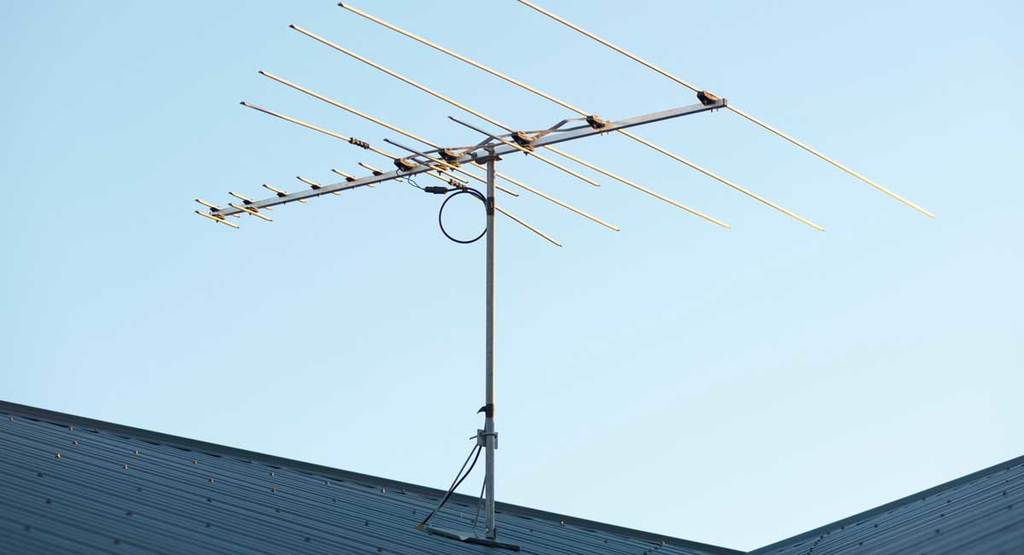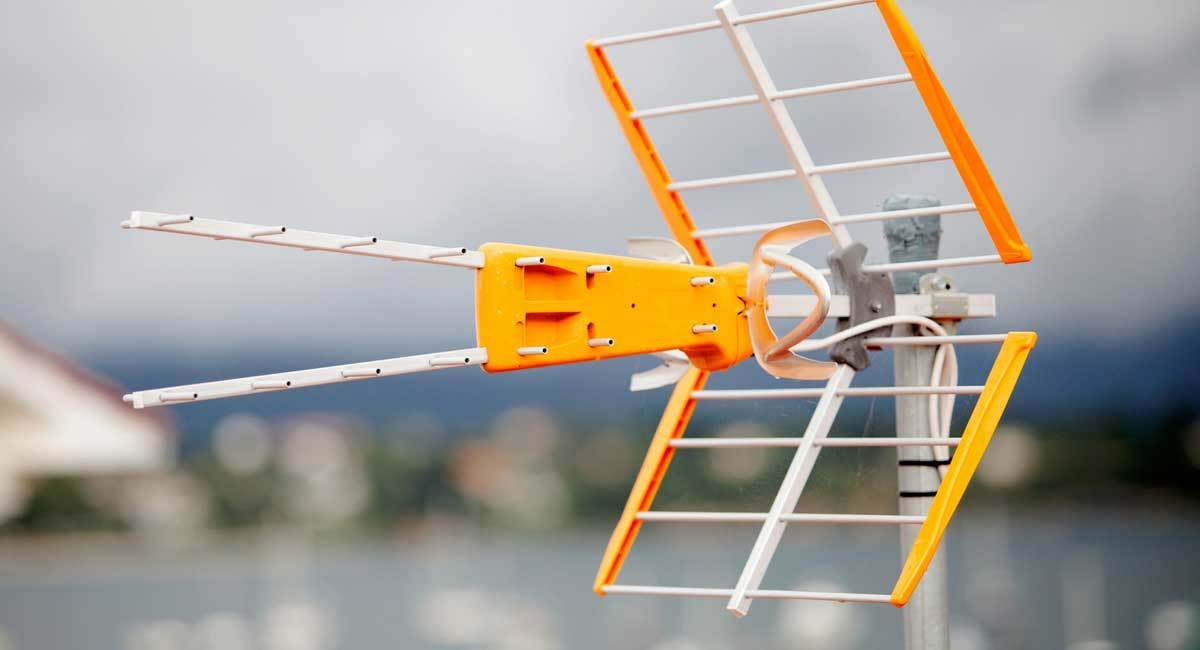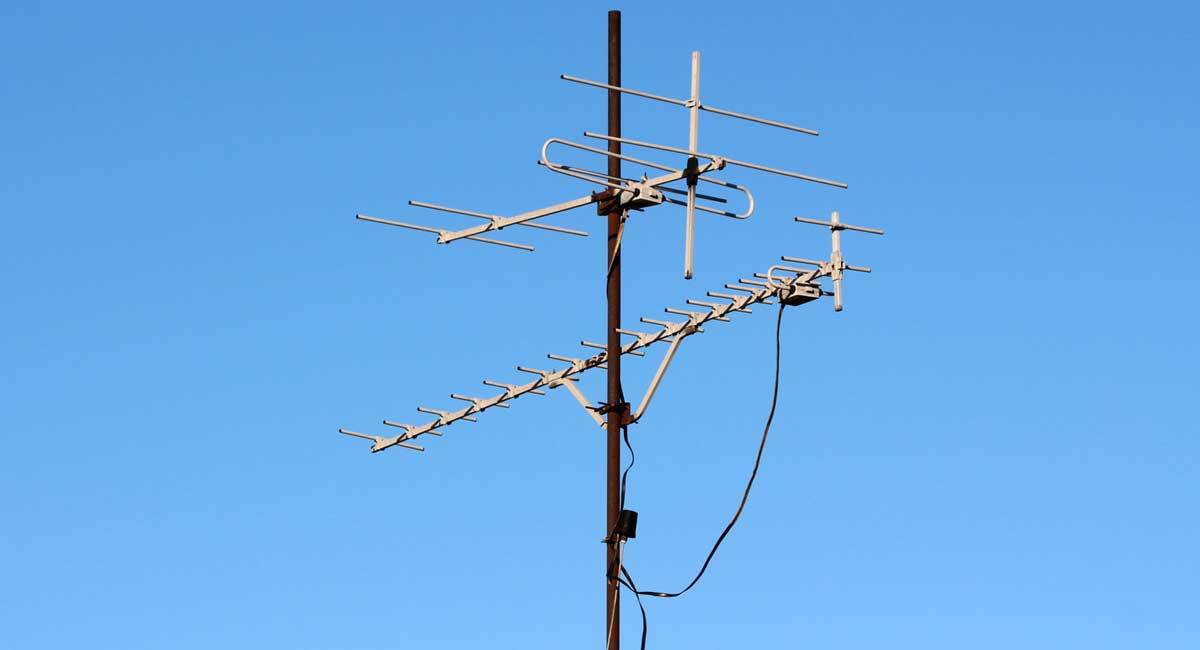- You are here:
- Home »
- Blog »
- Pillar Article »
- How to Ground a TV Antenna Correctly

How to Ground a TV Antenna Correctly
You are probably aware of the mandatory grounding that is demanded right after you install an antenna. Grounding mitigates the dangerous effects of static electricity build-up, as well as the chances of a direct or indirect lightning strike. Grounding a television antenna goes a long way to protect your entertainment system.
Grounding an antenna goes beyond a manufacturer’s inscription on the packaging. Grounding is a requirement by the National Electrical Code. Ground your antenna with copper wire, unless you are advised otherwise by a professional.
While grounding may be uncharted territory for many, if you successfully put up your antenna, you will be able to ground it easily.
In short, these three reasons explain why you must ground an outdoor television antenna:
- To protect your electronics from power surges. Voltage surges usually accompany thunderstorms that continuously pile static charge on the antenna.
- In many, if not all states, it is a legal requirement to ground television antennas.
- Grounding reduces the chances of electromagnetic interference that can be emitted by just about any electrical appliance.
Electrical appliances discharge hard-to-detect amounts of electrical current. If this current has no grounding cable to discharge through, the current may be “heard” by your TV antenna, causing static interference.
Please note that grounding is not the ultimate protection from lightning strikes. It will,
however, minimize the chances of a lightning strike.
What it Means to Ground an Antenna
In the field of electrical installations, to ground an antenna is to establish a connection between the antenna and the (literal) ground.

Although DIY grounding is easy to do with some general research (provided below), we recommend that you hire the services of a licensed electrician. The professional will either inspect your homemade grounding system or do the grounding for you.
In this article, we describe the normal grounding process. If, however, there is a water line beneath your house, contact a professional for help.
What You Need to Ground Your Antenna
Hey! By the way… any links on this page that lead to products on Amazon are affiliate links and I earn a commission if you make a purchase. Thanks in advance for your support!
House Ground Wire
House wire is already pre-installed in your house and is made of a thick piece of copper metal that is connected to a metal rod beneath the earth.
Before you begin installing your TV aerial, identify the location of the house ground wire and inspect it for any signs of corrosion.
If your wire is damaged, do not attempt to repair it yourself. Get it replaced by an electrician, as faulty repairs can lead to catastrophic damage to your house.
Two Grounding Cables
You need two copper cables with a minimum thickness of 10AWG. These copper wires must, however, be smaller than the house ground wire which is usually between 6-2AWG.
The first grounding cable connects to the antenna mast and the second connects the coaxial cable to the ground.
Mast Clamp
A mast clamp is used to attach a ground wire to the antenna pole. The clamping device can be either a pipe clamp or a ground strap.
Piper clamps were originally intended for joining grounding rods, but they have gained popularity as superb mast clamps.
Another way of attaching a grounding cable to the antenna without a clamp is to attach it to one of the bolts on the antenna rod.
Note: If the area on the antenna that the grounding wire should be attached to is painted or coated, scrape the paint off so that it comes into direct contact with the ground wire.
Coaxial Grounding Block
This device is used to ground the coaxial cable of the antenna. It is technically known as the antenna discharge unit.
Coaxial grounding blocks come in two types:
The standard coaxial grounding block
This is the most common grounding block used in homes. It is located at the point where the coaxial cable enters your house.
The grounding block allows any static electricity to discharge from the coaxial cable, while the broadcast goes on uninterrupted.
To install the standard grounding block, attach one side of the coax cable to this block. Attach another, separate piece of coax cable to the other side of the block, then connect it to the television.
The grounding block has two holes with clamping screws to facilitate this kind of installation.
Coaxial Lightning Arrestor
The coax lightning arrestor is for homes that are at a high risk of a direct lightning strike.
The lightning arrestor is filled with gas that ionizes when lightning strikes. The arrested charges are then directed towards the ground.
Ground Clamps
Back to the antenna mast and coax cable grounding wires, run them down and connect both of them to the house ground wire. Ground the clamps securely to keep the cables in place.
You can also use an Intersystem bonding termination bar to connect grounding wires without having to uninstall the house grounding wire.
The bonding bar allows the installation of multiple grounding wires to the house ground wire without any adverse effects.
Ample Coaxial Cable
You need enough cable to cover the length of two segments to and from the coax grounding block.
How to Ground an Outdoor TV Antenna
Two sections of the outdoor antenna must be grounded, these are the mast and the coaxial cable.

Grounding the coax, sometimes known as signal grounding is the most detailed of the two procedures.
Grounding the Antenna Coax
A grounded coax cable shuttles the overflow of static electricity charges to the earth. In addition, grounding this cable eliminates noise generated by RF from the TV set. This noise interferes with signal reception.
The following steps show how to ground the coaxial cable:
Install a Lightning Arrestor or Grounding Block
Attach the appropriate grounding block at the point where the coaxial cable enters your house.
It is okay to install it on the exterior walls so long as it is sheltered from rain.
Secure the Grounding Block to the Wall
Grounding blocks are packaged with screws for easy installation on the wall.
Attach Antenna Cable to the Grounding Block
Run the coaxial cable from the antennae to the block. If the cable is too long for the distance, you can shorten it to the appropriate length.
The length of cable from the antenna to the grounding block is exposed to all weather elements. You can, however, weatherproof it using a waterproofing grease.
Note: Weatherproofing grease has no adverse effects on the flow of signals.
Before you pass the coax cable inside the house, make a loop to prevent rainwater from trickling inside though.
Avoid sharp corners when installing the coaxial cable as this affects their performance. If you can’t avoid passing the cable through a bend, use F-type right-angle connectors.
Roll the Second Coaxial Cable from the Block to the Tv or Set-top Box
Connect the cable securely at the grounding block then check the signal reception on your TV. Make sure you are satisfied with the channels that are broadcasting before you move to the next step.
Connect the Grounding Wire to the Block Grounder and the House Ground Wire
The grounding wire from the antenna passes through the block and then to the house ground wire. At the house ground wire, join it with the copper wire using the intersystem bonding termination bar adapter.
Take the shortest route without sharp turns when you are running the coax wire along the wall. No bends in the coax ensure that the excess voltage from a power surge is transported efficiently to the ground.
Grounding the TV Antenna Pole
Attach a Copper Wire to the Head of the Antenna and Secure it with a Mast Clamp

If you are using a bolt to attach the wire directly onto the antenna, scrap off any paint or insulation. The copper wire must be in direct contact with the metal of the antenna.
Extend the Grounding Wire from the Mast to the House Ground Wire
Now run the mast grounding wire to the house ground wire and attach it with a clamp or bolt. Secure it in a different spot from the grounding wire.
Conclusion
The only reason for grounding an antenna is safety, and because of that, follow all the grounding instructions to the letter. To do anything casually or uninformed defeats the purpose and could lead to serious property damage or injury.
The legal aspect of grounding demands compliance with laws that govern electrical installations.
Related Posts
How to Improve TV Antenna Signals
How to Hook an Antenna Up to a Digital TV
How to Boost Outdoor TV Antenna Signal in 6 Easy Steps
How to Install an Outdoor Antenna — A Step By Step Guide
Tips on How to Boost Indoor Antenna Signals
Let’s Compare: Antennaweb vs TvFool
Guide on How To Boost TV Antenna Signal Homemade
How To Aim Your TV Antenna For Maximum Reception

